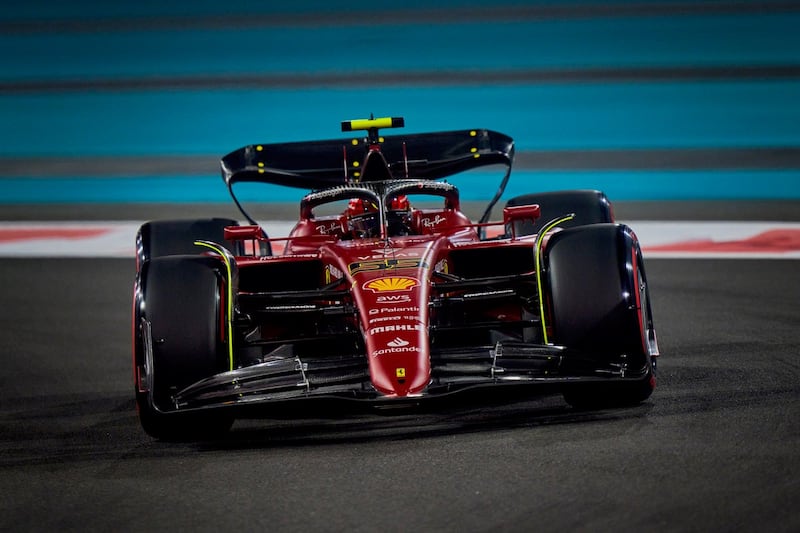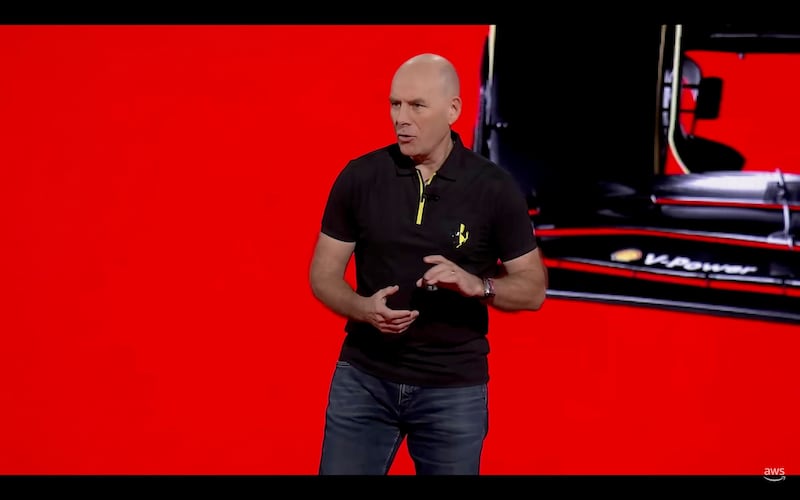There’s one thing that Formula One cars do above all else. No, not accelerate more quickly than you can blink, although they do indeed do that. No, not scorch through corners at speeds you or I would baulk at doing in a straight line, although they do that too. No, Formula One cars generate data. Lots and lots of data.
How much? The answer kind of depends on whether you’re talking about during a race (when the number of physical sensors on a car is reduced to help save weight) or practice (when the number of sensors is ramped up to try to understand what’s happening with each and every component). The broad-stroke answer is that each car generates a terabyte of data each race weekend, or about 30 megabytes per lap. That’s only the tip of the data iceberg, though, as more information is stored in the car’s onboard computers and only downloaded later, and once all of the data has been split apart into its various information silos it can double or even treble in size.
What all of that data is doing is telling the car’s engineers and designers how to make it faster. A fluctuation of air over a surface here. A squash of tyre sidewall there. A fraction too much fuel burned over there.
All of the little ones and zeros will have a direct effect on how the race team will try to improve its car and make it faster still. Indeed, each piece of data will give birth, so to speak, to millions more like it as the data from the on-track performance is fed into CAD design sessions, computational fluid dynamics equations and wind-tunnel tests. Each tiny nugget of information will be pored over and over until it can be turned into a tiny, infinitesimal performance advantage. Add all of those microscopic advantages up, and you get a faster car than the competition.
READ MORE
All of which can kind of smother that which makes F1 so appealing in the first place: that it’s a competition between drivers. The sport side of the sport often becomes overwhelmed by the technical side, and the direct wheel-to-wheel dicing on the track can sometimes seem secondary to the arguments over precisely what shape of rear wing the teams are allowed to use (which was a debate in 2022). The data overload is both a cause and effect of that dominance of matters technical.
How can we avoid the sport becoming subsumed by its own information? Well, you could try using the data to make the sport more closely competitive and more thrilling during its two hours of on-track action on a Sunday afternoon, and to bring the fans closer to the sport. Amazon is trying to do just that.
Amazon Web Services, or AWS, is Amazon’s computing solutions arm and it has been embedded in Formula One for some time now. It was through AWS’s supercomputing prowess that Formula One’s governing body was able to create the ‘new-for-22′ rules package that tried (and for the most part succeeded) to bring the cars closer on track and make the racing more exciting. AWS is not just helping to make the rules, though. It’s also trying to gee up interest in what’s happening on track.
Watch F1 on the TV and you’ll soon spot AWS branded infographics on the screen, including those that try to predict when two cars might soon be in close racing proximity to one another. It’s a way of helping fans understand what’s happening amid the blizzard of strategy calls and changing conditions on track.
“A big part of what we’re responsible for in the broadcast team, and in using the power of AWS, is demystifying sport,” James Bradshaw, Formula One’s head of digital technology told The Irish Times. “We have an ever-expanding portfolio of fans coming in now, some of whom have a much less deep understanding of motorsport.

“So making the sport accessible to them, entertaining for them and engaging for them is something that we’re able to do. And that’s what we want to keep doing with AWS graphics, making it so that somebody with a more entry-level understanding of motorsport can see what’s going to happen next and anticipate that next exciting point in the story or a story.”
As a lifelong F1 fan, I ask Bradshaw if there’s not a danger that too much prediction, too much analysis might not only take away some of the thrill and surprise of the sport, but also take away from the skill of the commentary teams – after all, it’s through the likes of David Croft and Martin Brundle that many fans make their human connection with the sport.
“I don’t think it takes away, I think it gives the commentators points to discuss and talk about,” says Bradshaw. “Maybe it in a way it levels the playing field. We have commentators in many, many countries who have different depths of experience and I think something that the graphics do is create talking points for them. I don’t think commentators dislike having a graphic appear on screen that they can try to dissect or explain for a fan. And don’t get me wrong, we can’t do it alone. The graphics on their own don’t tell the full picture. And we do require the commentators to be able to understand that and explain.”
Perhaps rather pleasingly, while AWS might be all about the sheer power of computing and pushing the limits of AI and machine learning, the way the F1 on-screen graphics work is that the computers crunch the data but then real humans decide which bit of the data is interesting. “There are myriad graphics and myriad data points that could be put up on screen through a race. But we have to draw the distinction editorially,” says Bradshaw.
“And it’s our producers and data analysts that do this in real time during a race. They have to draw that line between what might be interesting, and what’s necessarily valuable to the story because fundamentally what we’re doing is telling the story of the race. And so the data points have to editorially work with what’s going on on track.
“Another aspect of the graphics is that they allow us to tell stories that are not just at the front of the pack. It allows us to bring to the surface stories that are lower down the pack. We can do that by cutting to other drivers or inserting a graphic and that gives that hint to the commentators that there’s a battle brewing further back in the pack.” It’s a pleasingly analogue side to a high-tech, data-driven sport.
The human factor is still considered to be the most important part even by those whose day job is crunching the data. Jock Clear is the senior performance engineer for Ferrari, and is a driver coach to the incredibly fast Monégasque driver Charles Leclerc. Clear has worked with the likes of Lewis Hamilton, Michael Schumacher, Jacques Villeneuve, Nico Rosberg and David Coulthard and even though AWS is now a sponsor of the Ferrari F1 team he’s adamant that the most important component is the driver that holds the wheel.

“F1 racing is a blend of software, hardware and human skill”, Clear says at AWS’s big annual conference in Las Vegas. “The driver is the one part of this complex jigsaw that we haven’t designed, we haven’t built and we certainly haven’t programmed. But the driver, from our point of view, is the intelligence that allows us to make sense of so much data. In a relative sport there are no absolute solutions.”
Clear entreats us to think of an F1 car’s performance as a series of peaks. “These peaks are many and we have to find the highest peak. We want to be climbing Everest when our competition scales K2. This is where the true value of the driver comes in. His ability to both identify and communicate – and communicate is the important thing, it’s everything – his interaction with the car to guide our team of engineers in the right direction.”
Essentially, says Clear, the data creates the potential peaks but only a human driver can guide you to the top. How does AWS play into all this? It’s not just by crunching the data, it’s also about creating a better car for the driver to get the maximum from it. AWS and Ferrari have collaborated in producing a new virtual ground speed sensor, which uses AI to help precisely measure the car’s speed and movement, and which means that a physical onboard sensor can be done away with. That may sounds small but, as Clear says: “It allows us to save weight in a sport where every gramme counts.”
Ferrari and AWS are also going to collaborate, for the 2023 season, on a new phone app which aims to bring fans ever more behind the scenes of how an F1 race is run, and to deliver exclusive content and interviews with the Ferrari F1 team.
Beyond that, Clear says that AWS’s computing power is all about one simple thing: making a better car that Ferrari’s drivers can drive faster.
“Every driver is different” he says. “They all have unique skills. They respond to different cues and what works for Charles might not work for Carlos or Lewis or Max. Somewhere in that diagram we need to find the peak of performance, the pinnacle where the thousands of performance differentiators come together. There are hundreds of ways of getting it very, very wrong. And time is never on our side on track, we face constant decisions every day, every hour, every minute, every second. We make decisions which impact other decisions, deciding between options which are mutually exclusive.
“Do we want to trade off speed or cornering or do we want to trade off weight or reliability? Those trade-offs also vary from circuit to circuit. All of these decision points are opportunities for us. To make the right decision or the wrong decision. In those strategy calls we need to use our skill and judgment as engineers analysing data to strive for the fastest lap. The best strategy is the fastest.”














